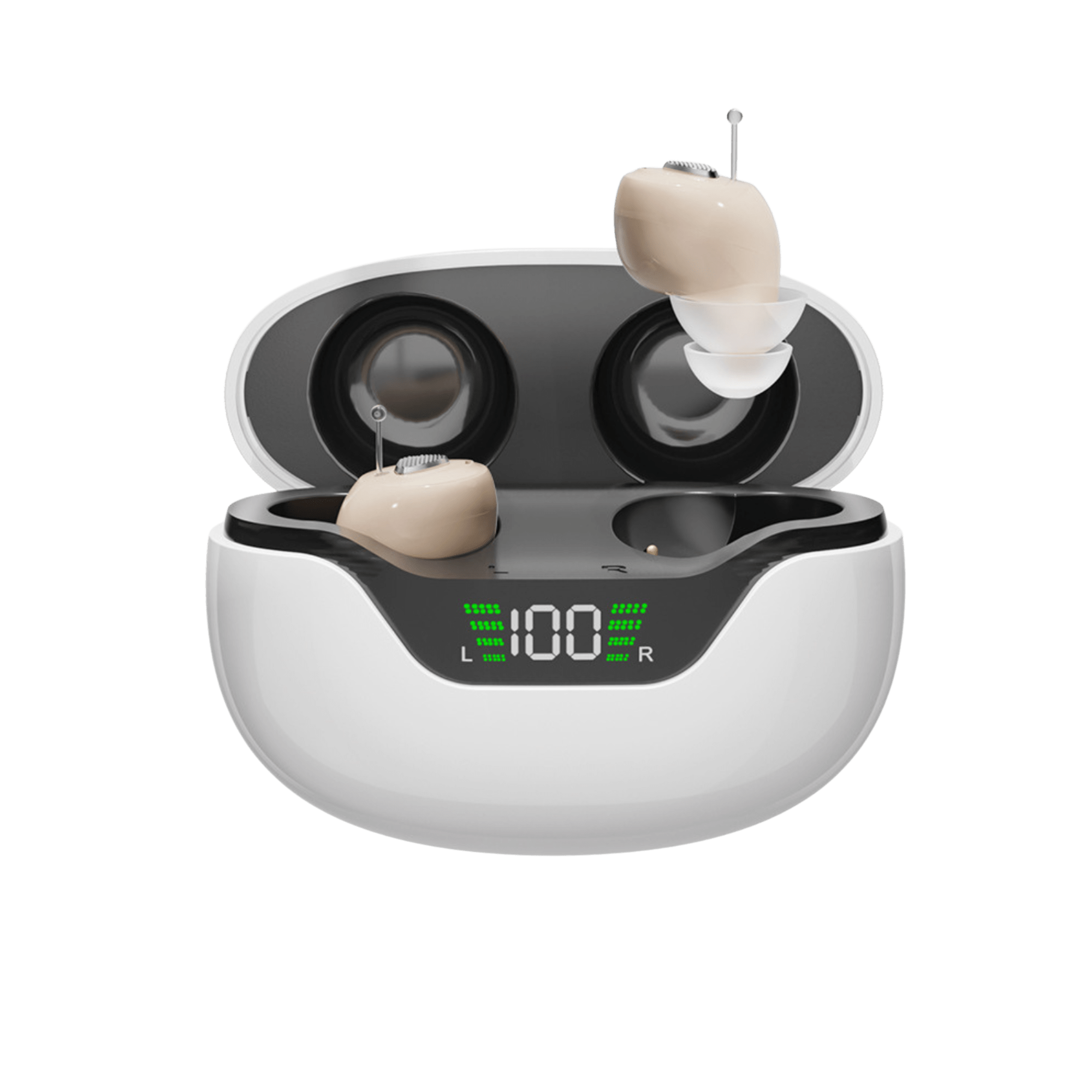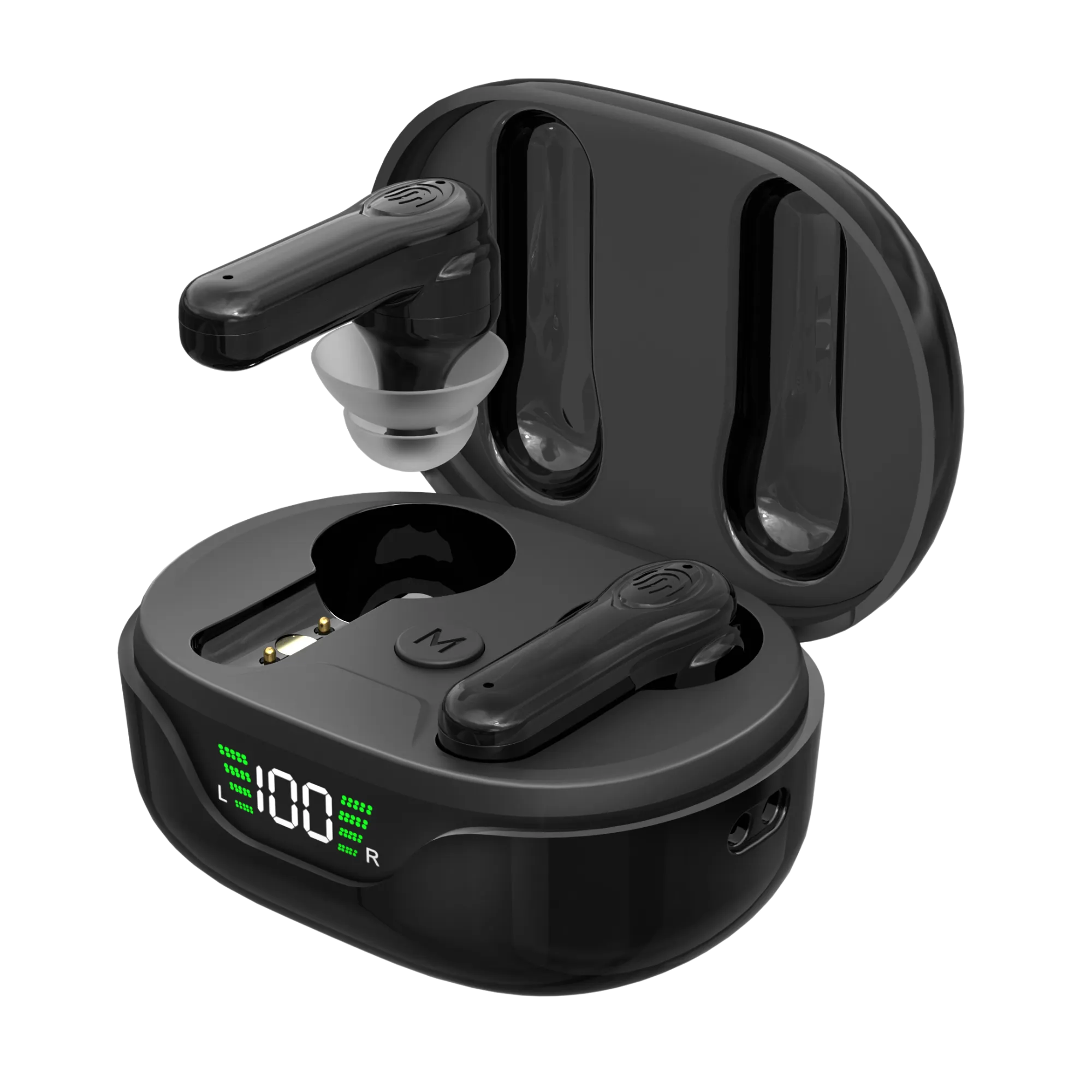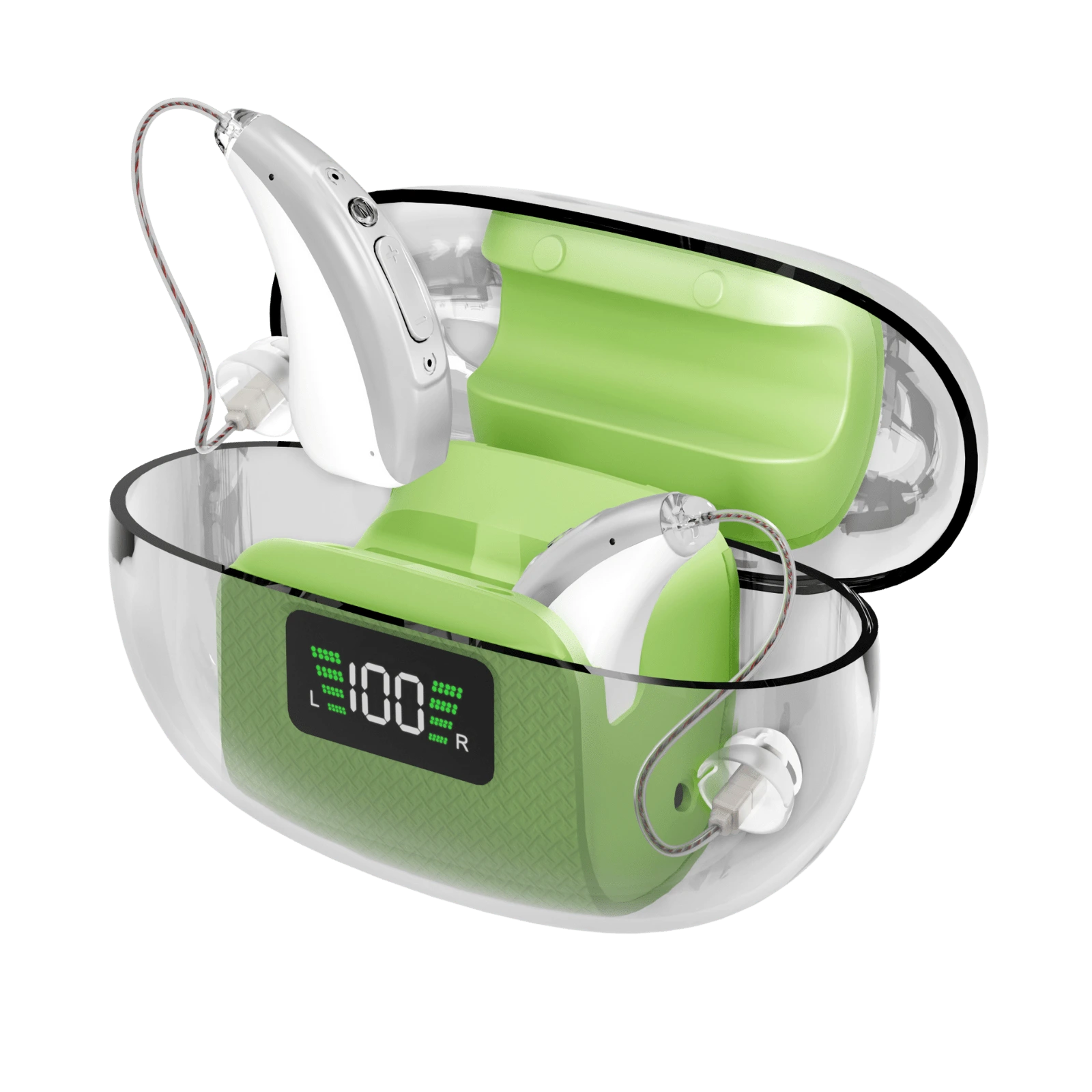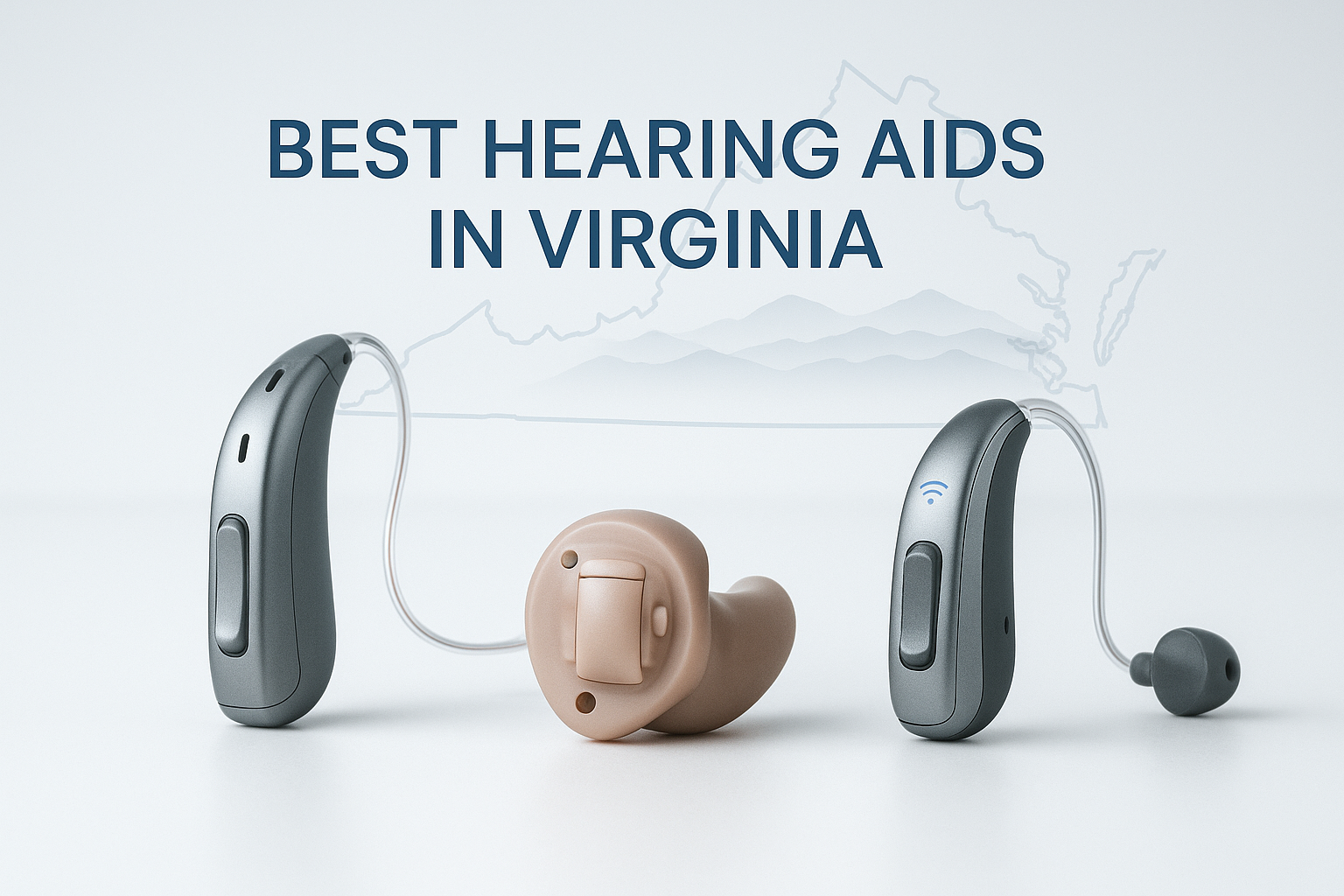TL;DR Summary
Hearing aids in Washington range from OTC options ($200–$2,000/pair) to prescription models ($3,000–$8,000/pair), depending on features like Bluetooth and noise reduction.
OTC aids are FDA-regulated for adults 18+ with mild-to-moderate hearing loss, while prescription aids—fitted by licensed specialists using Real-Ear Measurement (REM)—are best for more complex needs.
The Panda Hearing Quantum offers an easy 15-minute app test, Bluetooth streaming, and a rechargeable case—ideal for self-fit users seeking clear sound without the clinic wait. Always see a clinician first for sudden or painful hearing changes.
How We Researched & Chose (Methodology)
-
Scope: We reviewed current information (as of Oct 8, 2025) across FDA guidance, Washington Department of Health (DOH) licensure pages, clinic websites, and consumer sources (Google/Yelp/Healthy Hearing).
-
Clinical quality: Priority on REM verification, follow-ups, and access to custom molds/complex fittings.
-
Buyer protections: Confirmed trial periods (commonly 30–60 days clinic-dependent), fees, and warranty terms (typically 1–3 years for prescription; OTC varies by brand).
-
Pricing transparency: Collected 2025 ranges and representative quotes where available. Note: Clinics and retailers can change prices or policies without notice.
-
OTC vs Prescription: OTC favors self-managed adults with mild-to-moderate loss; prescription is recommended for moderate-to-severe, asymmetric loss, complex medical histories, or when professional verification is desired.
-
Conflicts: Panda Hearing is an OTC option featured here. We balance the guide with competing brands and clearly label our relationship.
Recommendation Matrix (User Profile → Best Path)
| Buyer Profile / Need | Best Path(s) | Estimated Cost Range | Considerations / Trial Time |
|---|---|---|---|
| Mild hearing loss; budget-friendly and self-managed | OTC (e.g., Panda Hearing Quantum, Jabra Enhance) + online/app support | $200–$2,000/pair | 30–60-day OTC trials vary by brand; focus on app ease, battery life, and fit comfort. |
| Moderate-to-severe loss or frequent noisy environments | Prescription with audiologist + REM | $3,000–$8,000/pair | Custom programming/molds; 45–60-day trials typical; insurance/Apple Health may help if eligible. |
| Active lifestyle, streaming priority | OTC or RX with reliable Bluetooth + app controls | $500–$6,000/pair | Prefer Bluetooth 5.x; check battery/case specs and return window. |
| Veterans / low income / Medicaid | VA clinics, Apple Health programs, grants | $0–$3,000 (often covered) | Eligibility-based; verify with VA/HCA; trials depend on provider policy. |
| Pediatric / tinnitus / medical comorbidities | Clinical evaluation first (DOH-licensed audiologist) | $1,000–$7,000/pair | Physician referrals for red flags; extended warranties; longer follow-ups. |
Estimated setup time: OTC self-fit about 1–2 weeks; prescription pathway typically 2–4 weeks including evaluations and follow-ups.
Top Hearing Aid Picks for Washingtonians
OTC Hearing Aids (Adults 18+ with mild-to-moderate loss)
OTC hearing aids are regulated by the FDA for adults 18+ with perceived mild-to-moderate hearing loss and can be purchased without a prescription. They are not a substitute for medical care when red-flag symptoms exist.
| Model | Best for / Key Strengths | Key Features | Typical Price (WA-available) | Trial & Return Info | Warranty & Support | Where |
|---|---|---|---|---|---|---|
| Panda Hearing Aids Quantum (Panda Hearing) | All-around OTC for adults who want app control and quick setup | Bluetooth 5.x streaming, 15-minute in-app self-test, rechargeable with pocket charging case, noise-reduction modes, tinnitus-masking sounds (optional), RIC design | $349–$499 per device (promotion-dependent; verified Oct 8, 2025) | 45-day trial — see Panda return policy for terms | 1-year limited warranty; email/chat support | pandahearing.com (ships to Washington) |
| Jabra Enhance Select 300 | Speech clarity in noise; premium OTC | AI noise reduction, Bluetooth, app controls, rechargeable | ~$1,695/pair | ~45-day trial | ~3-year warranty; app/phone support | Jabra.com, selected retailers |
| Eargo 8 | Discreet in-canal, active users | Self-fitting app, Bluetooth, rechargeable, tinnitus options | ~$2,699/pair | ~45-day return | ~2-year warranty | Eargo.com |
| Sony CRE-E10 | Budget Bluetooth option | Wireless streaming, app adjustments, long battery life | ~$999/pair | ~100-day trial | ~1-year warranty | Sony.com, Best Buy (varies) |
| Lexie B2 | Affordable self-fit | App-based test, noise reduction, rechargeable | ~$999/pair | ~45-day return | ~1-year warranty | Lexiehearing.com |
Battery clarity (Panda template): “Up to X hours listening time per device per charge; the charging case provides additional recharges for a combined total of up to ~96 hours under standard use.” Update X once you finalize lab/field numbers.
Prescription / Clinic-Brand & Premium Models
Prescription hearing aids require a licensed provider for diagnostics and fitting and excel for more severe loss, complex ear anatomy, custom earmolds, and REM-verified targets. Features often include 16+ channels, directionality, and robust noise management.
| Model | Best for / Key Strengths | Key Features | Typical Price (WA-available) | Trial & Return Info | Warranty & Support | Where |
|---|---|---|---|---|---|---|
| Phonak Audéo Sphere / Infinio family | Severe loss; noisy environments | Advanced speech enhancement, Bluetooth, rechargeable | $3,000–$4,500/pair | ~45–60 days (clinic-dependent) | ~3-year manufacturer/clinic | WA clinics, some big-box |
| Oticon Intent | Active lifestyles; streaming | BrainHearing processing, Auracast, tinnitus tools | $3,500–$6,000/pair | ~60 days | ~3-year | WA clinics |
| Starkey Genesis AI | Custom fit; tinnitus | Edge AI, fall detection, rechargeable | $4,000–$7,000/pair | ~45 days | ~3-year | WA clinics |
| Signia Styletto IX | Slim design | Beamforming mics, app controls | $2,500–$5,000/pair | ~30–45 days | ~3-year | WA clinics |
| Widex Moment SmartRIC | Natural sound; water resistance | PureSound, Bluetooth | $3,000–$5,500/pair | ~45 days | ~3-year | WA clinics |
Pricing and trial windows vary by clinic. Always confirm written trial/return and service policies before purchase.
City-by-City Washington Mini-Guides
How to use these tables: Treat them as a starting point. Last verified: Oct 8, 2025. Hours/brands/ratings change; confirm directly with each clinic. Where available, we note source types (clinic site, Google, Yelp, Healthy Hearing).
Seattle (Greater Puget Sound)
Urban density = many clinic choices, teleaudiology options, and typical waits of 1–2 weeks. Average quoted prescription pair: around $4,000, but ranges widely.
| Clinic | Address / Phone / Website | Hours / Appointments | Services | Brands / Custom / Repairs | Trial / Financing | Rating / Reviews | Source |
|---|---|---|---|---|---|---|---|
| Clear Hearing and Audiology | (Seattle) | Mon–Fri typical; online booking | Tests, tinnitus, REM, teleaudiology | Major brands; custom; repairs | ~45 days; CareCredit (varies) | High (recent public listings) | Clinic site / directories |
| PAC Audiology (Bellevue, near) | Mon–Fri typical | Comprehensive tests; cochlear referrals | Phonak, Oticon; custom molds | ~60 days | Strong Google/HH | Clinic/HH | |
| Northwest Hearing + Tinnitus | Mon–Fri; online | Tinnitus; REM; repairs | Starkey, Widex; adjustments | ~45 days | Strong | Clinic/dirs | |
| Seattle Hearing & Balance Center | Mon–Fri | Balance; cochlear | Multi-brand; tele options | ~30 days | Strong | Clinic/dirs | |
| Costco Hearing (Seattle) | Varies; walk-in/booking | Fittings; REM (location-dependent) | Kirkland, Phonak | 180-day Costco policy | Good | Costco/Google |
Spokane
Lower average pricing, faster scheduling (<1 week common). VA access is strong.
| Clinic | … | … | … | … | … | … | … |
|---|---|---|---|---|---|---|---|
| Representative Spokane clinics (Pacific Northwest Hearing, Providence Hearing Center, Spokane Audiology, etc.)—confirm hours, brands, and trial policies on their sites. Costco (Spokane Valley) offers broad returns (~180 days) and competitive pair pricing. |
(Repeat the condensed approach for Tacoma, Bellevue, Vancouver, Olympia, Bellingham, Everett, Yakima, Tri-Cities, Wenatchee, Redmond, Kirkland, Renton. If you prefer the long tables you drafted, keep them, but add “Last checked: Oct 8, 2025” atop each table and link each clinic name to its official site.)
Washington-Specific Laws, Licensing & Consumer Protections
-
Licensing: Audiology and hearing aid fitting are regulated by the Washington State DOH Board of Hearing and Speech. Audiologists generally hold graduate degrees and meet testing/supervised-practice requirements; Hearing Aid Specialists follow state training/exam criteria.
-
Trials/returns: Washington requires a trial/return period for prescription sales (clinic-dependent details apply). OTC follows federal rules (no statewide mandatory trial), but many brands and retailers offer 30–60 days—verify in writing.
-
OTC status: OTC hearing aids are regulated by the FDA for adults 18+ with perceived mild-to-moderate loss; they can be sold without a prescription or fitting.
-
Teleaudiology: Generally supported for adjustments/follow-ups; initial diagnostics may be in-person depending on provider policy.
-
Medical referral: Seek medical care first for sudden hearing loss, ear pain, drainage, or dizziness.
For the most current statutes and administrative rules, consult app.leg.wa.gov and doh.wa.gov (update links in your CMS).
Costs, Insurance & Assistance in Washington
-
Typical costs (2025): OTC roughly $200–$2,000/pair (e.g., Panda Quantum priced $349–$499 per device depending on promotion). Prescription $3,000–$8,000/pair depending on brand, bundle (service-included vs unbundled), and clinic. Fitting/service fees may add $100–$300 (clinic-dependent).
-
Medicare: Original Medicare generally does not cover hearing aids (hearing exams may be covered). Medicare Advantage plans may offer limited benefits—check your plan.
-
Washington Medicaid (Apple Health): May cover hearing aids for eligible adults when medically necessary; amounts, device types, and replacement intervals vary by plan and criteria. Verify with the Washington Health Care Authority or your plan administrator.
-
VA/TRICARE: Many eligible veterans receive hearing aids and services at no cost through the VA. TRICARE coverage varies—confirm eligibility and referral pathways.
-
Assistance & financing:
-
Washington Office of the Deaf and Hard of Hearing (ODHH) resources and referrals
-
HLAA Washington (chapter support)
-
Northwest Access Fund (assistive-tech loans)
-
Northwest Lions Foundation (assistance for qualifying applicants)
-
University clinics (e.g., UW Speech & Hearing Clinic) with sliding-scale programs
-
FSA/HSA can typically be used for hearing aids (OTC and prescription)
-
Financing: CareCredit and clinic plans (terms vary; confirm APR/fees up front)
-
Taxes & fees: These vary by channel and location. Check your checkout page or clinic invoice for final amounts.
Step-by-Step Buyer’s Roadmap
-
Screening: Start with a quick self-screening (app-based) or schedule a clinic hearing evaluation.
-
Choose path:
-
OTC if you’re an adult with mild-to-moderate perceived hearing loss and want self-fit convenience.
-
Prescription for moderate-to-severe, asymmetric losses, complex needs, or if you want REM-verified fitting.
-
-
Compare models/providers: Focus on fit/comfort, speech-in-noise performance, battery/case details, and return/warranty terms.
-
Trial period: Wear in real-world situations—quiet rooms, restaurants, calls, outdoors.
-
Follow-up & fine-tuning: OTC: adjust via app. Prescription: attend follow-ups (often included).
-
Maintenance: Daily cleaning, moisture protection, scheduled check-ups.
Checklists
What to Ask an Audiologist/Retailer
-
Do you use REM?
-
What is the trial period and are there restocking/clinic fees?
-
What’s covered under the warranty, and for how long?
-
Do you offer remote adjustments/teleaudiology?
-
What are expected battery and charging-case lifetimes?
Trial “Look-Fors”
-
Speech clarity in quiet and in noise
-
Comfort (no irritation/occlusion issues)
-
Feedback control (whistling)
-
App ease of use & stability
-
Day-to-day battery performance
Maintenance Basics
-
Brush/wipe daily; keep dry; store in a dry case
-
Replace domes/wax guards as instructed
-
Professional clean/check-ups every 6–12 months (prescription)
Red-Flags → See a Clinician First
-
Sudden hearing loss, ear pain, drainage, or vertigo
Resources for Washington Residents
(Update links/titles to your preferred references)
-
Washington DOH (Licensing & Rules) – provider lookup, regulations
-
Washington HCA / Apple Health (Medicaid) – coverage policies and eligibility
-
VA Audiology (Seattle & Spokane) – eligibility and access
-
HLAA Washington – support groups and education
-
ODHH / DSHS – resources and equipment programs
-
Northwest Access Fund – low-interest assistive-tech loans
-
Northwest Lions Foundation – financial assistance programs
-
UW Speech & Hearing Clinic – sliding-scale services
Frequently Asked Questions
Are OTC hearing aids legal in Washington?
Yes. OTC hearing aids are regulated by the FDA for adults 18+ with perceived mild-to-moderate hearing loss and can be sold in Washington without a prescription.
Can I return my hearing aids if they don’t help?
Prescription: Clinics typically offer 30–60-day trials (policies vary—get it in writing).
OTC: Brand/retailer policies vary; Panda offers a 45-day trial (see policy for terms).
Average costs in WA?
Metro areas (e.g., Seattle) tend to be higher; statewide, prescription pairs often land $3,000–$8,000. OTC ranges $200–$2,000/pair.
Does Original Medicare pay for hearing aids?
Generally no for the devices; some Medicare Advantage plans offer limited benefits.
What is Real-Ear Measurement (REM)?
REM verifies the hearing aid’s sound output in your ear canal, helping ensure accurate amplification.
How do I decide on Bluetooth/app features?
If you stream calls/music or want in-app controls, prioritize stable Bluetooth and a user-friendly app.
Can I use FSA/HSA?
Typically yes for both OTC and prescription hearing aids.
Teleaudiology in WA?
Common for adjustments/follow-ups; initial diagnostics may require in-person appointments.
Do VA programs cover hearing aids in WA?
Many eligible veterans receive free devices and services—confirm with the VA.
How should I clean and maintain hearing aids?
Daily cleaning, moisture control, and periodic professional checks. Avoid water exposure.
Panda Hearing — Key Specs & Policies (Quick Reference)
-
Model: Panda Hearing Aids Quantum (OTC)
-
Intended users: Adults 18+ with perceived mild-to-moderate hearing loss
-
Highlights: 15-minute in-app self-test, Bluetooth 5.x, noise-reduction modes, optional tinnitus-masking sounds, RIC design
-
Battery & charging: Update with verified per-charge hours; charging case provides additional recharges for a combined total of up to ~96 hours under standard use
-
Price: $349–$499 per device (promotion-dependent; verified Oct 8, 2025)
-
Trial: 45-day trial — see Panda return policy for terms
-
Warranty: 1-year limited warranty
-
Where to buy: pandahearing.com (ships to Washington)
Pro-cred boost (optional box on page): “Who should not pick OTC/Panda right now?”
Children (<18)
Adults with red-flag symptoms (sudden loss, pain, drainage, dizziness)
Known severe/profound hearing loss or complex ear anatomy
Users who want/need REM-verified prescription fittings
Editor’s note: This guide was written by the Panda Hearing team to help Washington residents understand today’s hearing-aid options. We’ve included our own Panda Hearing Quantum model alongside other reputable brands for a fair comparison. Our goal is simple: to give you clear, up-to-date information so you can choose the best solution for your hearing and budget.





